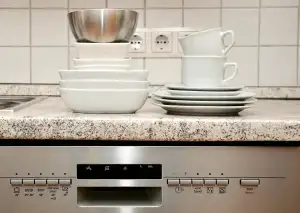Master the Art of Cleaning a Cast Iron Skillet: Essential Tips for a Pristine Home Kitchen

A cast iron skillet is a versatile and durable tool in any kitchen, but it requires proper care and maintenance to ensure its longevity. Cleaning a cast iron skillet may seem intimidating, but with the right techniques, it can be a simple and rewarding process. In this article, we will guide you through the essential steps to master the art of cleaning a cast iron skillet, so you can enjoy cooking with a pristine and well-maintained kitchen essential. Let's dive in!
Gather the Necessary Supplies
To clean a cast iron skillet effectively, it is important to gather the necessary supplies beforehand. Having the right tools will make the cleaning process easier and more efficient. Here are the essential supplies you will need:
1. Hot water: Make sure to have access to hot water for rinsing and cleaning the skillet.
2. Mild dish soap: Choose a gentle dish soap that won't strip away the skillet's seasoning.
3. Non-abrasive sponge or brush: Look for a soft sponge or brush that won't scratch the surface of the skillet.
4. Scraper or spatula: A scraper or spatula will help remove any stubborn food particles stuck to the skillet.
5. Paper towels or clean cloth: These are useful for drying the skillet after cleaning.
6. Vegetable oil or shortening: You will need oil or shortening for seasoning the skillet after cleaning.
By gathering these supplies, you'll be well-prepared to tackle the task of cleaning your cast iron skillet and maintaining its pristine condition.
Preparing the Skillet for Cleaning
Before diving into the cleaning process, it's important to properly prepare your cast iron skillet. Start by allowing the skillet to cool completely after use. This will prevent any potential injuries or burns during the cleaning process.
Next, using a paper towel or a clean cloth, wipe away any excess oil or food residue from the surface of the skillet. Be sure to remove any large pieces of food that may be stuck on as well.
Once you have wiped away the excess debris, it's time to tackle any stubborn bits that may be clinging to the skillet. Gently scrape off any remaining food particles using a wooden spatula or a plastic scraper. Avoid using metal utensils as they can scratch and damage the seasoning of your skillet.
After scraping off the stubborn bits, rinse the skillet with warm water. Avoid using soap at this stage as it can strip away the seasoning of your cast iron skillet.
Finally, dry the skillet thoroughly with a clean towel or paper towel. It's important to remove all moisture from the surface of the skillet to prevent rusting.
By following these steps and preparing your cast iron skillet properly, you are setting yourself up for success in achieving a pristine and well-maintained kitchen essential.
Removing Food Residue
Once you have gathered the necessary supplies and prepared your cast iron skillet for cleaning, it's time to tackle the food residue. Start by using a spatula or a wooden spoon to gently scrape off any large chunks of food that may be stuck to the surface of the skillet.
Next, fill the skillet with warm water and a small amount of mild dish soap. Let it soak for a few minutes to loosen any stubborn food particles. Avoid using harsh abrasives or metal scrubbers as they can damage the seasoning on your skillet.
After soaking, use a non-abrasive sponge or brush to scrub away any remaining food residue. Make sure to pay attention to the sides and corners of the skillet as well. If there are still some stubborn spots, you can create a paste by mixing coarse salt and water and gently scrubbing those areas.
Rinse the skillet thoroughly with warm water to remove any soap residue. Be sure not to leave any soap behind as it can affect the taste of your future meals.
By following these steps, you will effectively remove all traces of food residue from your cast iron skillet, leaving it clean and ready for further cleaning and maintenance.
Scrubbing and Cleaning the Skillet
Once you have removed the food residue, it's time to give your cast iron skillet a thorough cleaning. Using a stiff brush or sponge, scrub the skillet with warm water and a small amount of mild dish soap. Avoid using harsh abrasives or steel wool as they can damage the seasoning.
Make sure to scrub all areas of the skillet, including the sides and bottom. Pay extra attention to any stubborn food particles that may be stuck on. If necessary, you can use a plastic scraper or spatula to gently scrape off any remaining residue.
After scrubbing, rinse the skillet thoroughly with warm water to remove any soap residue. Be sure to remove all traces of soap as it can affect the taste of your future dishes.
If there are still stubborn stains or rust spots on your skillet, you can try using a paste made from equal parts baking soda and water. Apply this paste to the affected areas and let it sit for a few minutes before scrubbing again.
Once you are satisfied with the cleanliness of your skillet, rinse it once more with warm water and pat dry using paper towels or a clean cloth. It's important to dry your cast iron skillet completely to prevent any moisture from causing rust.
Remember not to leave your cast iron skillet soaking in water for an extended period as this can also lead to rust formation.
Drying and Seasoning the Skillet
After cleaning your cast iron skillet, it is crucial to dry it thoroughly to prevent any moisture from causing rust. Start by using a clean, dry cloth or paper towel to remove any excess water. Then, place the skillet on a stovetop burner set to low heat for a few minutes to evaporate any remaining moisture.
Once the skillet is completely dry, it's time to season it. Seasoning helps create a non-stick surface and adds flavor to your dishes. Begin by applying a thin layer of cooking oil or melted shortening all over the skillet, including the handle and exterior. Make sure to use an oil with a high smoke point like vegetable oil or flaxseed oil.
Next, use a clean cloth or paper towel to spread the oil evenly, ensuring that every inch of the skillet is coated. Be careful not to apply too much oil as this can result in a sticky residue. Once coated, place the skillet upside down in an oven preheated to 350°F (175°C).
Allow the skillet to bake for about an hour. This process will polymerize the oil, creating a durable and slick surface on the cast iron. After an hour, turn off the oven and let the skillet cool completely inside before removing it.
Remember that seasoning is an ongoing process that improves over time with regular use and proper care. Each time you cook with your cast iron skillet, you're adding another layer of seasoning that enhances its performance.
By following these steps for drying and seasoning your cast iron skillet, you'll ensure its longevity and maintain its non-stick properties. A well-seasoned cast iron skillet will become more versatile and enjoyable to use as you continue your culinary adventures in your pristine home kitchen.
Storing the Skillet Properly
Once your cast iron skillet is clean and dry, it's important to store it properly to maintain its pristine condition. Here are a few tips for storing your skillet:
1. Avoid stacking: Cast iron skillets are heavy and can cause damage if stacked on top of each other. Instead, store them individually in a cool, dry place.
2. Use a paper towel or cloth: Before storing, place a paper towel or cloth inside the skillet to absorb any moisture and prevent rusting.
3. Cover with a lid or plastic wrap: To keep dust and dirt away, cover the skillet with a lid or tightly wrap it with plastic wrap.
4. Store in a low-humidity area: Moisture can lead to rusting, so choose a storage location that is low in humidity, such as a cupboard or pantry.
By following these simple steps, you can ensure that your cast iron skillet remains in excellent condition and ready for your next culinary adventure!
Tips and Tricks for Maintaining a Cast Iron Skillet
1. Avoid using soap: Soap can strip away the skillet's seasoning. Instead, use hot water and a stiff brush to clean it.
2. Dry thoroughly: After washing, make sure to dry the skillet completely to prevent rusting. You can place it on low heat on the stovetop for a few minutes to ensure all moisture is evaporated.
3. Re-season regularly: To maintain the non-stick surface, re-season your skillet every few months or as needed. Apply a thin layer of oil and bake it in the oven at 350°F (175°C) for an hour.
4. Use gentle utensils: Metal utensils can scratch the seasoning of your skillet. Opt for wooden or silicone utensils instead.
5. Store properly: Store your cast iron skillet in a cool, dry place with a paper towel or cloth inside to absorb any moisture and prevent rust.
6. Avoid drastic temperature changes: Rapid temperature changes can cause your skillet to warp or crack. Allow it to cool down gradually before cleaning or storing.
By following these tips and tricks, you'll be able to maintain the quality of your cast iron skillet and enjoy its cooking benefits for years to come.
In conclusion, mastering the art of cleaning a cast iron skillet is essential for maintaining its longevity and ensuring optimal cooking performance. By following the steps outlined in this article, you can enjoy a clean and well-maintained skillet that will continue to serve you delicious meals for years to come. Remember to always use the proper supplies, remove food residue promptly, scrub gently but effectively, dry thoroughly, season regularly, and store correctly. With these tips and tricks, your cast iron skillet will be a prized possession in your pristine home kitchen. Happy cooking!
Published: 16. 12. 2023
Category: Home



